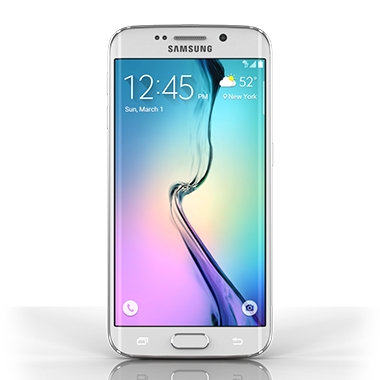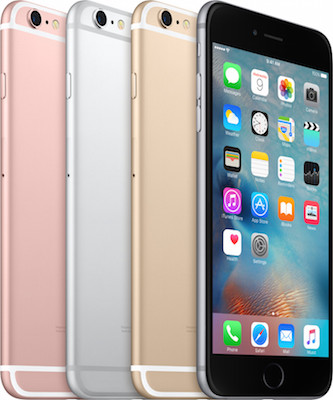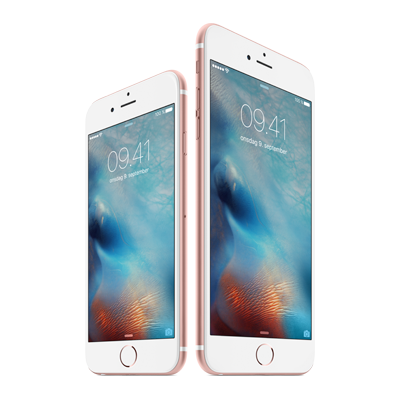Apple iPhone 6s vs. Samsung Galaxy S6

Toggle Dark Mode
The years-long “Apple vs. Samsung” rivalry has been well documented, both inside and outside of the courtroom, even despite their continued collaborative efforts on several projects — including Samsung’s contract to develop Apple’s A series mobile processors.
But when it comes to their physical product offerings, specifically in the mobile realm, how exactly do Apple and Samsung differ? More importantly, what do end users have to say?
One of the most paramount features that differentiate the iPhone from Samsung’s Galaxy line is the software, with iPhone running the latest version of iOS 9, and Samsung’s Galaxy S6, for example, running Android 5.1 Lollipop.
But what else stands between the two? Better yet, is there a clear winner if you actually pit them against one another? Well, you’re about to find out, friends, because today we’ll be assessing exactly that.
Design/Display
One can say that Samsung has caught on to something that Apple’s had a firm grasp on for quite some time now. Something beautiful, indeed, specifically concerning the external design aesthetics of their products. On that note, Samsung has clearly stepped up their game with the Galaxy S6, which features a solid aluminum, unibody design, similar to its Cupertino counterpart. Moreover, the Galaxy S6 features a 5.1 inch Super AMOLED panel at 1440 x 2560 qHD resolution, which clocks in at an impressive 576 pixels per inch.
In contrast, the iPhone 6s is offered in two variants, the 6s and the 6s Plus, which feature 4.7 and 5.5 inch panels, respectively, at 1334 x 750 and 1080 x 1920 resolutions, also respectively. Samsung is clearly ahead of the curve as far as display technology goes, however it’s important to note that Apple’s 6s features the inclusion of 3D Force Touch technology, which enables users to interact with the device on a whole new level.
Under The Hood
Apple’s iPhone 6s is powered by the 3rd generation, 64-bit A9 chip, which clocks in at 1.85 GHz of dual core power, and features a six-core graphics coprocessor with 2GB of DDR3 RAM. The Galaxy S6, by contrast, is equipped with Samsung’s home-brewed Exynos 7 “octa-core” processor, with four cores boasting the Cortex-A53 architecture at 1.5 GHz, and the other four featuring Cortex-A57 clocked at 2.1 GHz. The Galaxy S6 also features 3GB of RAM.
Its important to note, however, that of most relevance to the end user are single-core performance statistics, seeing as how 97-98% of applications rely solely on a single-core process. That being said, according to GeekBench v3.0, Apple’s pride and joy easily trumps the Galaxy S6, boasting scores of 2488 and 1213, respectively, meaning that, in terms of raw, day to day use, the iPhone is about 50% faster than the Galaxy S6.
Camera
The Galaxy S6 and iPhone 6s both feature impressive camera hardware, at 16MP and 12MP, respectively, and both units feature 4K video recording capability. While many argue that the Galaxy 6S camera module is superior to that of its iPhone competitor, it’s important to note that Apple iOS 9 software boasts a plethora of advancements over Android, including the Live Photos feature, which is an entirely new, interactive and fun way for users to bring their photos to life.
Battery
The battery, perhaps the most important variable of all, right? Well, the Galaxy S6 is definitely the clear winner here, insofar as capacity is concerned, at least. The Galaxy S6 and iPhone 6s feature 2,550 and 1,715 mAh, respectively.
However it’s important to note some people have been reporting that they’re unable to eek out more than 3 or 4 hours from their Galaxy S6 before having to juice up again. In stark contrast, despite its smaller capacity, iPhone 6s users report between 6 and 7 hours on a full charge.
Conclusion
Key advantages of the iPhone 6s over the Samsung Galaxy S6 include performance, 3D Touch, ease of use, and comprehensive support due to software/hardware integration. On the other hand, Android is a lot more customizable, which makes a compelling case for power users and tech gurus.
The Galaxy S6 also features a slightly better camera when it comes to taking low-light photos; and boasts some innovative features that are not available on the iPhone, such as “Fast Charging,” which allows the device to be charged from 0% – 100% in just over 100 minutes.
So, as you can see, both devices clearly have their respective advantages and disadvantages, making this another case of what matters most to you.












